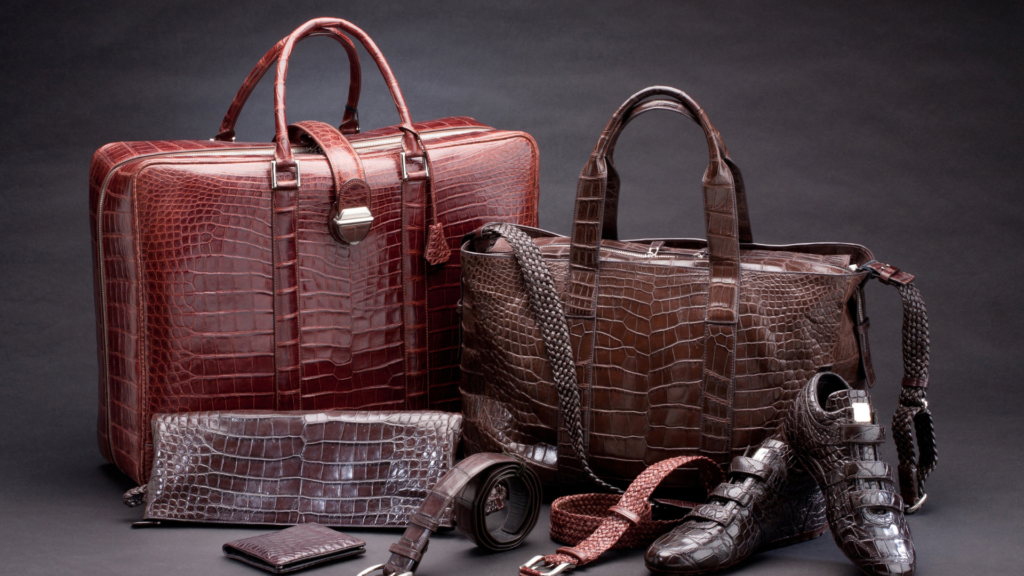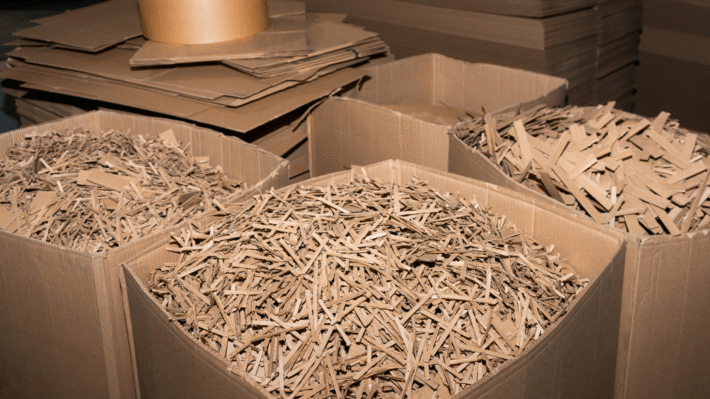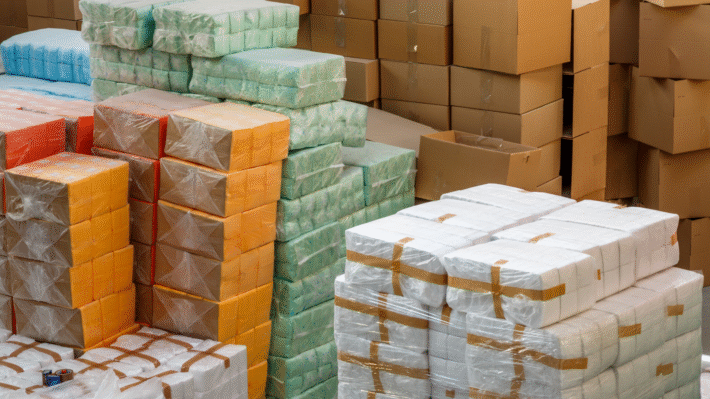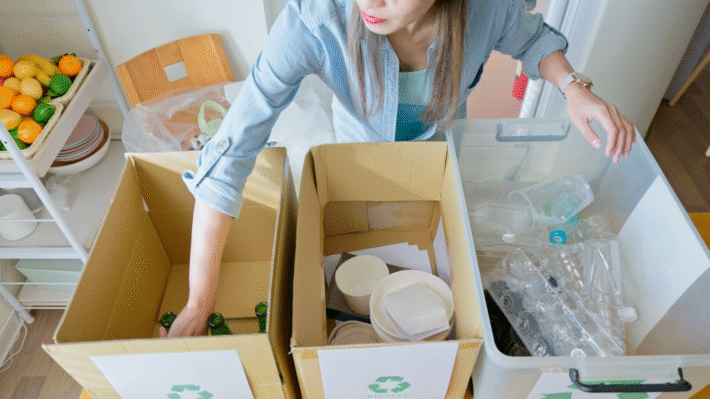Revamping the Leather Industry by Upcycling Waste for a More Sustainable Future

Welcome to the marvelous world of circularity in the leather industry, a transformative journey to redefine waste and reshape the future. Isn’t it rousing to imagine upcycling leather scraps into new, innovative materials? If you’ve ever gazed at an old leather jacket, handbag, or shoe, contemplating its end of life, this read is for you. We’ll dive into the exciting, yet sometimes challenging, realm of revolutionizing the conventional leather supply chain into a circular epitome. From characterizing the types of leather waste, exploring upcycling technologies, innovative materials, to unraveling sustainable business models — we have got it all! We’ll explore every nook and cranny of creating a sustainable and viable circular leather economy, shedding light on technological advancements and the multifaceted benefits of circularity. So buckle up, my eco-conscience friends, we are about to embark on a leather journey like no other, transforming trash into treasure while saving our beautiful planet.
Leather Industry Overview
Let’s dive right into the heart of the matter – leather. It’s a valuable resource, right? It’s all around us; in our cars, our homes, our clothes. But, there’s a twist in this story. With every fancy leather item we enjoy, there’s a darker side – a significant environmental impact and waste generation that is seldom mentioned.
Environmental Challenges and Waste
Impact of Leather Production on Environment
Here’s the scoop. Leather production isn’t as rosy as the final product looks. Unfortunately, the journey from a cow hide to your swanky leather jacket or your sleek car seats is pretty intense on Mother Earth.
The process involves various stages, starting with sourcing the hide, then moving on to preservation, soaking, liming, fleshing, and finally, tanning. All these steps require a bunch of harsh chemicals like chromium salts, which are not exactly best friends with our environment.
Due to the use of such chemicals, a lot of toxic waste is generated leading to soil contamination, water pollution, and adverse effects to aquatic life. And, let’s not forget the massive amounts of water consumption needed in these processes. Talk about a recipe for disaster!
Types of Leather Waste Generated
Now, about the waste. Trust me, it’s not just about the bits and pieces left from your jacket’s pattern. The waste comes from incomplete hides, trimmings, and also from the residues of various treatments during production.
Let’s not forget the finished leather products that have run their course. Those old leather boots tossed in a box somewhere in your attic are also part of the problem. With such a vast array of sources, leather waste is a grave concern indeed.
Understanding Circular Economy
Now, here comes the hero of our story – Circular Economy.
Definition and Importance
So, what exactly is a circular economy? It’s a system of regeneration. Think of it as Mother Nature’s circle of life, but instead of animals, we’re dealing with waste and products. The focus is on reducing waste, reusing resources, and recycling old products into new ones.
Why is it important, you ask? Because it helps us tackle the menace of ever-growing waste, saving our natural resources, and reducing environmental damage. The beauty of a circular economy is that it’s not just about being green; it also opens new avenues for economic growth and innovation.
Role of Upcycling in Circularity
Which leads us to upcycling, a crucial player in the circular economy game. Upcycling is a step beyond mere recycling. Instead of breaking down the materials to their base form, it repurposes them or uses in ways that enhances their value from their original state.
In the context of leather waste, upcycling could result in innovative products, keeping valuable material in use, reducing the demand for virgin leather, and toning down the environmental footprint of the leather industry. It’s all about turning trash into treasure, making the world less wasteful, and a whole lot more sustainable.
Now, isn’t that a story worth telling? So, let’s gear up and delve deeper into this exciting journey of creating circularity in the leather waste supply chain.
Types of Leather Waste
Let’s talk leather, folks – but not just any leather. I’m talking about the pieces that no one wants, the leftovers that get tossed aside without a second thought. Waste. You might not know this, but the leather industry is full of it, literally.
Production Waste
Offcuts and Defective Hides
When you think of a stunning leather jacket or a swanky pair of boots, only the most pristine pieces of leather come to mind, right? But, here’s the kicker, not all leather makes the cut. During the design process, parts that have scars or insect bites end up like chaff separated from wheat – tossed aside. These are called defective hides. Additionally, the production process leaves us with yet another type of waste – offcuts. These are the bits and bobs left behind after the patterns for various products are cut from a hide. Trust me when I say, these pieces add up, creating significant waste volume.
Trimmings and Shavings
Our foray into the dark underbelly of leather waste continues with trimmings and shavings. Trimmings are the leftovers from the cutting process, while shavings are the thin layers removed during the leather thickness reduction process. Though these might sound like minuscule parts in the grand scheme of things, believe me, their environmental impact is anything but small!
Post-Consumer Waste
Old Leather Goods
Okay, riddle me this: what happens to that worn-out pair of leather shoes or that frayed leather bag once they’ve outlived their purpose? They become post-consumer waste – another hidden villain in the world of waste production.
End-of-Life Products
Here’s another category you probably haven’t given much thought – end-of-life products. Picture this: that swanky car with the luxurious leather seats will someday reach the end of its journey. The same goes for leather furniture and upholstery, which ends up adding to the colossal mountain of waste that we are grappling with.
Processing Waste
Dust and Chemical Waste
Alarmingly, leather production also generates a significant amount of hazardous waste. During leather processing, dust gets generated containing chromium salts and other harmful chemicals. This chemical waste poses severe environmental risks, and managing them is a challenge on its own.
Remember, recognizing the types of waste in the leather industry is our first step towards tackling the issue. So, let’s step up and address this waste elephant in the room, and together, let’s strive for a cleaner, greener world.
Challenges in Circularity
Stepping into a circular model is no kiddie park stroll. After years of a “make, use, throw” attitude, re-engineering systems checks in with its unique set of speed bumps. Let’s zoom in on a few of these sticking points, shall we?
Infrastructure and Collection
One of the first bridges we need to cross involves the gear and grunt-work that makes circularity tick – our infrastructure and collection.
Sorting and Collection Systems
Reality check: if your waste isn’t picked up, it can’t be upcycled. And before we can send our leather wastes onto a new life, we need a collector’s net to catch it. Sorting out the good from the bad and the ugly is another befuddling nuisance. Without smart sorting and collection systems, we’re like a dog chasing its tail – going nowhere fast.
Complexity of Leather Composition
Leather – it’s tougher than you think. This hardy material, a beloved classic, has more going on beneath its shiny surface than meets the eye.
Chemical Treatment Challenges
We don’t just scoop up a cowhide and call it finished leather, folks. The journey from farm to fashion is a cocktail of complex chemical treatments and transformations. Breaking down these chemically altered scraps causes a fair bit of head-scratching among green warriors.
Market Demand for Recycled Leather
At the end of the day, every brave new initiative needs an audience that says, “Sign me up!” The market’s attitudes towards recycled leather could swing the pendulum of success. Unless Joe and Jane Public are ready to embrace bags, shoes, or jackets made from upcycled scraps, we could hit a circular brick wall.
In the grand scheme of things, these challenges might seem like some hefty speed bumps. But let’s flip the script here. Instead of barriers, let’s view them as opportunities just waiting to be transformed, upcycled if you will, to circles in the road that lead us to a more sustainable leather industry. Remember folks, every problem is an invitation for a smart solution. Let’s RSVP with circularity!
Upcycling Methods and Technologies
When leather wastes rear their ugly heads, fear not. There’s hope. There are a handful of crafty techniques out there to handle this blemished beast. Let’s dive in, shall we?
Let’s start with mechanical upcycling — an interesting process which involves physical treatments but no magic potions or wizardry.
Mechanical Upcycling
Under this category of upcycling, ‘shredding and flocking’ as well as ‘molding and pressing’ are two methods that deserve some spotlight. These are activities most 5th graders would relate to. Only, instead of paper and clay, we’re dealing with leather. So, what’s the scoop?
Shredding and Flocking
Picture this – you’ve a piece of paper, but it’s no good in its current state. And you start tearing it up into small pieces. That’s similar to shredding. Torn pieces of waste leather are mechanically broken down into pint-sized bits and pieces.
Next up, flocking. Ever looked closely at a Christmas tree? Notice the tiny fiber-like bits adorning it? That’s pretty much what happens in flocking. Our shredded leather is magically transformed into soft, fluffy fibers. These fibers hold potential. They can be used in car interiors or to create new forms of leather — leather that’s not just reborn, but also renewed.
Molding and Pressing
Got playdough as a kid? Then you’ll understand molding. Here, we play with leather scraps. Only difference — we’re all grown up and this isn’t playtime. In this process, these bits and bobs are fit into a mold (like you did with playdough) and pressed into a certain shape.
Now imagine compressing that playdough under grandma’s hefty cookbook. That gives you a sense of pressing. Leather scraps are pressed under massive pressure to create a completely new form of leather. And voila, new life is breathed into old waste.
Chemical Upcycling
If Mechanical upcycling rocked your world, prepare to be introduced to its charismatic cousin, chemical upcycling. Doing what the name implies, we use chemical processes like ‘Enzymatic Breakdown’ and ‘Collagen Reprocessing’. Sounds heavy, but stay with me.
Enzymatic Breakdown
“Enzymatic breakdown” may sound like a mouthful, but it’s simpler than you think. Picture Pac-Man, our enzyme, gorging on the leather waste. The result? Like magic, old leather waste is broken down into a soft pile of leather pulp.
Collagen Reprocessing
This is the spectacular finale of the upcycling behind-the-scenes tour; we take a deep look into collagen reprocessing. Leather, at its cores, is collagen. It’s what Elvis Presley’s blue suede shoes were made of. By reprocessing collagen, we can create textures and materials that appear nothing like their original leather look. A true transformation.
Recycling Techniques
As we wrap things up, let’s not forget about ‘recycling techniques’ like ‘reconstituted leather’ and ‘regenerated leather sheets’.
Reconstituted Leather
Ever heard of Frankenstein? Reconstituted leather is kind of similar – it’s a mash-up of various shredded leather waste fused together. This new form of leather can be used in a variety of ways. It’s all about giving a second chance, transforming the old and unwanted into something new and desirable.
Regenerated Leather Sheets
Last but not least, we’ve got regenerated leather sheets. Leather scraps are mashed, rolled, and pressed into sheets, then used as a valuable material in many industries. Presto! We have a fresh batch of leather, ready to charm the world with its renewed potential.
And there you have it! The many methods of leather upcycling — from shredding, flocking, pressing and molding, to chemically supercharging leather waste into usable materials, to classic recycling techniques. With a bit of creativity and innovation, the possibilities are limitless. Remember, old dogs can learn new tricks, and old leather can too.
Innovative Materials from Upcycled Leather
In the quest to create a circular leather supply chain, innovative materials produced through upcycling have shown a great potential. They’re positioning themselves at the vanguard of a new, sustainable and cutting-edge industry. Among them, we find unusual suspects like leather-based bioplastics, cork composites, and hybrid textiles.
Bioplastics and Cork Composites
Bioplastics, which are typically derived from renewable biomass sources like vegetable fats and oils or corn starch, are now being made from upcycled leather. After going through a process of shredding, blending, and further treatment, leather waste is transformed into a biodegradable plastic-like material with impressive properties. It is durable, flexible, and visually appealing, making it a versatile substitute for traditional plastic.
Cork composites, on the other hand, are created by combining upcycled leather with natural cork, using non-toxic resins. This creates a material that is resilient, lightweight, and has excellent thermal and acoustic insulation properties.
Hybrid Textiles for Various Uses
Equally fascinating is the creation of hybrid textiles. These innovative materials blend upcycled leather with other fibers such as cotton or synthetic fabric using advanced textile technology. The result could be a durable, high-quality fabric with the look and feel of leather but greater sustainability credentials.
Using Upcycled Leather in Non-Consumer Products
But don’t think the use of upcycled leather is confined to consumer goods like fashion accessories or home decor! No, not at all! There’s an array of inventive applications in non-consumer industries that are demystifying leather’s stereotype.
Construction and Insulation Materials
For instance, in the construction industry, there’s an emerging trend of using upcycled leather in building materials. Leather waste could be processed into acoustic insulation or pressed into decorative panels, adding style and function to modern architecture.
Automotive Interior Applications
And how about revamping automotive interiors with upcycled leather material? That’s right! Upcycled leather could be used as internal linings or seat covers to give luxurious textures inside a car. This not only adds a touch of sophistication but also demonstrates the automaker’s commitment to environmental sustainability.
In a nutshell, the innovative utilization of upcycled leather is not just witnessing a surge in traditional product lines. The transformation is penetrating into unexpected sectors, opening a wealth of opportunities for sustainability, business, and design. As we continue to uncover the potential of the circular leather supply chain, the future of the leather industry appears strikingly promising and, indeed, transformative.
Business Models for Circular Economy
The key to leveraging leather waste isn’t only about inventing whizz-bang technologies and methods. No sir, the real magic often lies in the business models themselves. These are three fundamental models that could convert mountains of waste leather into practical and profitable currency.
Closed-Loop Systems
Closed-loop systems, as a central part of the circular economy, is one of the ways smart businesses are reclaiming value from what was previously considered waste. By turning waste streams back into resources, we’re making waste work for us. Kind of like a boomerang.
Take-Back Programs
Take-back programs? They’re brilliant! It’s a system where companies take back their products after their usable life has ended.
Think about this for a moment: Here’s a worn-out jacket. Old and frayed, it’s seen better days. But under a take-back program, it’s shipped back to the manufacturer. Those old scraps become hot commodities—revamped, reshaped, and reworked into something new! An ingenious method, wouldn’t you agree?
Brand Collaborations
Brand collaborations offer bucket loads of potential too. Brands unite in the fight against waste, exchanging their leather scraps for genuine smiles. It’s like swapping baseball cards in the playground, but instead of cards, brands swap waste. These scraps then transform into all sorts of useful and innovative things, from new handbags to eccentric home décor.
Eco-Design Strategies
Eco-design means designing with purpose, with an eye on the environment. It’s about eliminating waste right from the start, thinking about the life cycle of a product beginning from the design phase. It’s an innovative strategy, a twist to the traditional manufacturing ways.
Design for Disassembly
Design for Disassembly? Now, that’s revolutionary! In this approach, products are designed so that they can be easily taken apart at the end of their usable life. It’s kind of like a Lego set. You build, you play, you break it down, and then you build anew. It’s thinking ahead and planning for that ‘end of life’ moment, only to give a product a new lease on life. Clever stuff!
Using Waste as Raw Material
At first glance, waste may appear useless. But think again. Using waste as raw materials is a wise tactic employed in the circular economy, turning refuse into treasure. Leftover rinds of leather can transform into bioplastics, or be melded into hybrid materials. Waste isn’t waste anymore—it’s a resource in disguise!
Localized Production Centers
Circles are local. And so are circular economies. Our waste doesn’t have to travel halfway across the world to be upcycled. Localized production centers are the way to go.
Processing Hubs
Processing hubs are local centers where our waste gets collected and upcycled. It keeps the transport circuit short, and subsequently slashes carbon footprint. Not only do they reduce waste, but they also boost the local economy.
Artisanal Production
Even traditional craft, including artisanal production, plays a part in a circular economy. Local artisans, skilled in handling leather, can turn scraps into beautiful, handcrafted products—creating value where there was none. Imagine discarded pieces of leather turned into an artisan’s masterpiece—each one unique, telling its own tale of reclaimed beauty.
And there it is, friend. Circularity in the leather waste supply chain isn’t just about upcycling methods and technologies—it’s about inventive business models too. It’s about making waste work for us. And that, my friend, is the real magic of a circular economy.
Benefits of Creating Circularity in Leather
Creating circularity in the leather industry, that is, turning waste from leather production into usable materials, has a bunch of fantastic perks. Let’s break down these benefits into four main categories – environmental, economic, brand reputation, and regulatory benefits.
Environmental Benefits
The benefits to Mother Earth are immense. Let’s dive a little deeper into this.
Reduction in Waste
Think about this for a moment: a big-time leather factory churns out tons of leather each day. Alongside, piles and piles of scraps also get dumped – wasted. With circularity, we take this waste and make something new out of it. It’s like magic!
We’re reducing waste and giving it life again as a different product. That’s a big win for our environment because less waste means a cleaner, healthier planet for all of us.
Conservation of Resources
By upcycling from waste, we’re not just reducing rubbish, we’re actually conserving natural resources. Let’s face it, making leather from scratch uses a lot of resources like water and energy. But, when we upcycle, the resource input is dramatically reduced. It’s like getting bonus resources out of nowhere!
Economic Advantages
Join me as we venture into the realm of economics, where creating circularity in leather starts making real cents (see what I did there?).
Development of New Markets
When we transform leather scraps into new materials, you know what we’re doing? We’re creating brand new products! And with new products comes a new market, ripe for the taking.
Think about paper made from leather scraps or the super cool leather chips used in home decor. Opportunities abound in this new marketplace.
Opportunities for Local Business
Here’s another juicy part – local businesses can hop on this train and make it work for them. Small businesses can specialize in crafting goods from upcycled leather materials, making them unique in their niche. Local jobs get created, the community thrives, and the economy gets a big high five.
Enhancing Brand Image
Now, let’s move to reputation and how circularity in leather can jazz it up.
Consumer Appeal
Let’s be real, customers are getting wise about the environment. They don’t just want good looking products; they want products that do good too. By using upcycled materials, a brand shows they care about the planet, and customers will love them all the more for it.
Sustainability Initiatives
Also, a brand that takes action towards sustainability earns brownie points on the corporate responsibility front. It tells a positive story about tying the brand ethos with actual, impactful environment-saving moves.
Regulatory Support
Guess who else loves it when you create circularity in leather? The Government.
Compliance and Future-Proofing
By embracing upcycling, you’re not only toeing the legal line (because, after all, waste management rules are tightening up), but you’re also planning for the future. The trend is clear: we’re moving towards a time where waste will need to be cut down. By taking action now, you’re making sure that when that time comes, your business is prepared.
From this, the advantages of circularity in leather are crystal clear. It helps our planet, boosts our economy, creates a positive brand reputation, and keeps you in the good books of regulatory bodies. It’s a win-win-win-win all around.
Technological Advancements
Technological advancements prove to be crucial in the journey towards generating circularity in the leather waste supply chain. Here are some of the noteworthy ones:
Alternative Tanning Methods
Traditional leather production relies heavily on chromium salts in the tanning process, a toxic element that causes significant harm to the environment. For this reason, scientists are constantly seeking alternative tanning methods that are both effective and eco-friendly.
Research has led to innovations like vegetable tanning, using organic substances like tree bark extracts that are kinder on the environment. Another alternative is the use of synthetic tannins that don’t carry the environmental toll of their chrome counterparts, all the while providing the same, if not better, quality of leather.
This sustainable shift in the industry’s core process is bound to play a significant role in transforming the leather supply chain into a circular one and by extension, the entire leather industry.
AI-Assisted Sorting
Artificial intelligence or AI-assisted sorting is another ground-breaking advancement. As the name suggests, this technology allows automatic sorting of leather waste, separating pieces that can be upcycled.
This system significantly streamlines the waste separation process, conserving a ton of labor hours and decreasing the chance of human error, paving the way for greater efficiency and less waste in the supply chain.
Advanced Recycling Techniques
Advanced recycling methods like pyrolysis and gasification can also contribute heavily to circularity in the leather supply chain.
These advanced recycling techniques break down leather waste into their fundamental chemical building blocks. The resulting materials can then be reused to produce fresh batches of leather or create entirely different products. Through these methods, leather waste is given new life, instead of ending up in the dump or pollutant incineration plants.
Research and Development Collaborations
Finally, research and development collaborations play a paramount role in driving innovation. Partnerships between leather companies, academic institutions, technology providers, and even policymakers can stimulate the development of sustainable technologies and strategies that bolster circularity.
As each entity brings its unique expertise and ideas to the table, these collaborations combine diverse knowledge pools, drastically increasing the pace of progress towards a sustainable leather industry.
These technological advancements are gradually reshaping the leather industry, propelling it toward a circular supply chain. With an accelerated adoption and continued innovation, they have the potential to eliminate leather waste once and for all.



